I have been incredibly impressed with the little Takahashi FS-60 and quite surprised by how much a 6cm aperture can reveal of the night sky, especially from a dark site. That scope has now travelled multiple times to Africa as well as several destinations in Europe and the UK. The excellent optical quality and extremely high contrast have left me a very satisfied owner. However, one target in particular is the FS-60s Achilles heel and that is Mars. Many fast doublets are better corrected at the blue end of the spectrum and can struggle with the ruddy browns and reds of Mars which can leave the image soft and underwhelming. The modular nature of the FS-60 is a feature that has always appealed and one component in particular looks to overcome that weakness, the 1.7x CQ module. Either sold as a complete scope, or as an accessory to easily retrofit to a standard FS-60, the module screws in behind the lens and converts the scope into an f/10 quadruplet super apo, the FS-60Q.
Unable to resist the temptation of having a small scope that may be able to do it all, I purchased the CQ module, giving me the best of all worlds with both a FS-60 and FS-60Q depending on where I am travelling and what I intend to observe.
Takahashi FS-60
The basic FS-60 is a very capable telescope, delivering views which often belies its diminutive 6cm aperture, thanks to the excellent contrast and razor-sharp optics, but as mentioned above it does have one or two weaknesses. This review will focus on the capabilities and features of the quadruplet f/10 scope. For a more thorough treatment of the base FS-60, you can read the review of that scope here.
The FS-60 is an air-spaced doublet lens with a focal length of 355mm (f/5.9) with the front element fabricated from fluorite and the rear negative element from an eco-glass in a conventional Fraunhofer design. The lens is held in a simple cell which is not much larger than the lens itself and cannot be collimated. However, over more than three years of use, I have removed the lens numerous times, and it has not lost collimation upon reattachment. The lens coatings are excellent with the lens only revealing itself when a bright line is shone directly at it.
The fit and finish of the OTA is first class with a deep pearly white paint finish and the classic Takahashi green accents on the lens cover and stock focuser look superb. The dew-shield is the same diameter as the main tube as simply screws on to the front of the lens cell. The stock focuser does not have 2” accessory capability out of the box though an adaptor is available. Additionally, the drawtube is quite short at only 1” in length which means visual observers will need to use extenders to achieve coarse focus with fine focus achieved with the focuser. The same issue does apply when using the CQ module, though I have replaced the focuser with a 2” Starlight Instruments Feathertouch which eliminates both of these problems.

The standard equipment FS-60 focuser only has 1″ of focus travel, meaning extension tubes are often required to bring eyepieces to focus, a problem eliminated with a Feathertouch upgrade.
The 1.7x CQ Module
The 1.7x CQ module is 17.5cm long including lens assembly and weighs 300g. The module itself has the same wonderful pearly white finish as the main OTA and is painted flat black inside with a single knife-edge baffle to minimise contrast-robbing off-axis light scattering.
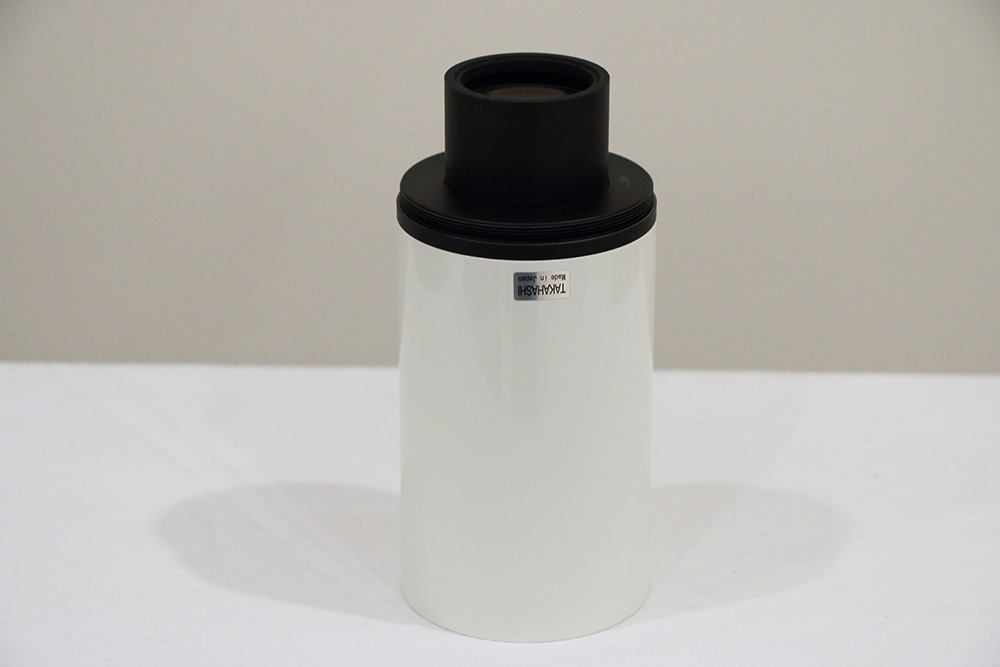
The CQ Module has the same high quality finish as the FS-60, with the lens benefiting from the best anti-reflection coatings I have ever seen.
Incorporating the module into the scope is a very simple exercise. The primary objective is unscrewed from the OTA and the CQ module is threaded onto the OTA before re-attaching the objective lens assembly onto matching threads on the front of the CQ module. Once incorporated, it does make the scope look a little weird. If the basic FS-60 is one of the prettiest scopes available on the market, the FS-60Q isn’t. Not that such things matter, especially in the dark. The balance point is still quite far back so most of the extended OTA will protrude out in front of the clamshell, including both joining threads.

The three components of the FS-60Q broken down: The FS-60 lens assembly, the CQ module, and the remaining OTA and focuser.
The coatings on the CQ module doublet are the best I have ever seen. Having deep purple hue when viewed from an acute angle, the lens is quite invisible when viewing either up through the OTA or down from the objective end, minimising any concerns that the extra glass in the light-path will reduce the brightness or add ghosting to the image seen.
The extender itself is a negative doublet lens assembly which extends the focal length by 1.7x to 600mm, for an f/10 focal ratio. While that description sounds suspiciously like a Barlow lens, the CQ module, by being placed in a fixed position and designed to match a specific objective lens, achieves a lot more than any Barlow, including flattening the field and reducing many off-axis aberrations such spherical aberration, chromatic aberration and astigmatism.
While an f/10 focal ratio would make the scope rather slow for astrophotography, Takahashi themselves suggest the scope is particularly well suited to lunar and solar eclipse observing and imaging thanks to a corrected 44mm imaging circle with 95% illumination at the edge (covering a full frame 35mm sensor), though exposure settings might need to be adjusted to capture the delicate detail of the solar corona. Additionally, Takahashi propose these features also make for a capable telephoto lens for daytime shooting, something I did in Namibia to capture distant grazing Oryx antelope with very pleasing results.
One must be cautious when comparing the performance numbers of telescopes between manufacturers. Is that quoted strehl mono or poly-chromatic, what wavelength(s) was used, are the numbers design theoretical or real world measured? However, a touch more comfort can be taken by comparing stated performance characteristics of scopes from the same manufacturer. Takahashi provide spot diagrams for both the FS-60 and FS-60Q. The improvement, especially off axis is considerable, and would seem to provide some support for Google translated Japanese sites that the 1.7x CQ module improves the strehl of the optical system by 10%. That would be a significant improvement for what were already very good optics in the standalone FS-60.

A comparison spot diagram of the basic FS-60 (Top) and FS-60Q (bottom). The off-axis improvement is considerable. Credit: Takahashi Japan.
That is the theory at least. How does it actually perform out under the stars where it counts?
Under the Stars
The star test of my FS-60 is very good and I was unable to detect any real change to the Fresnel ring pattern with the CQ module installed.
Some users of the FS-60 have reported levels of chromatic aberration that do not reflect my own experience. The f/5.9 focal ratio results in a scope with a razor thin focal plane. Any deviation from the actual focus point results in a delicate fringe of colour around bright objects. Atmospheric induced focus shifts likely amplify this effect. The FS-60 does display modest chromatic aberration on Venus and some bright stars such as Vega, though I have never been able to convince myself I can see false colour when observing the Moon, but I have never considered it objectionable or detracting from the view. The CQ module only improves things. Not only is the focus plane deeper thanks to the switch to f/10, making the achievement of perfect focus a simple matter, but the residual colour seen on certain objects previously mentioned is eliminated as well. The FS-60Q now has colour correction levels as good as my LZOS triplets.
The base FS-60 really impressed me with its performance on double stars. Many doubles considered a good test for a 3” scope proved to be fairly easy quarry for the 2.4” Takahashi. Even more impressive was the ability to hair-split the Double-Double in Lyra at only 88x (using the 4mm setting of my Nagler Zoom), a feat I have seen scopes with as much as twice the aperture fail to achieve at the same magnification. With the CQ module it is more of the same. While I was unable to significantly drop the magnification to achieve the same split (Epsilon Lyrae at 86x using a 7mm Nagler Type 6), the splits were perhaps just a tad easier thanks to slightly tighter stellar images. The sharp performance on doubles also translates to planetary observing as well.
In June 2016 I was once again fortunate to visit the International Dark Sky Association Gold rated NamibRand Nature Reserve in Namibia. Not only are the incredibly dark skies a joy to stargaze under and allow access to the wondrous DSOs that never clear the horizon from the UK, but also at this time both Saturn and Mars were passing near the zenith in the hours after sunset. This provided a wonderful opportunity to test the capabilities of the FS-60Q without the turbulent, murky, atmosphere near the horizon blurring planetary detail.
Combining a reasonably favourable opposition of Mars (still subtending more than 18 arcseconds during my stay) with a maximum altitude of more than 86o above the horizon when crossing the meridian, allowed the FS-60Q to deliver almost spellbinding amounts of detail when first pointed at Mars. I may have even gasped on that first look, not believing what a 6cm aperture was showing me. Truly a scope transformed, the subtle albedo features of Mars were there to see, along with a polar cap and some delicate high atmosphere clouds as well. I rapidly ran up the magnification scale using my Tele Vue Nagler 3-6mm Zoom to the 3mm setting for 200x, yet the image remained sharp, with excellent contrast. At a magnitude of -1.9 the image did darken but was still very usable.
So surprised by the performance boost of the 1.7x CQ module on Mars, I actually removed it from the optical train to eliminate the possibility that high altitude and atmospheric tranquillity were not the dominant contributors to this stunning view. While the image delivered by the base FS-60 was superior to anything achieved in the UK, the image was softer with some unfocused light, the features less readily available to be viewed.
In my FS-60 review, I reported excellent performance on the other planets, and it is just more of the same, and possibly a touch sharper still. Plenty of low contrast detail on Jupiter with multiple cloud bands and the GRS, as well as shadow transits and transits of the Galilean moons themselves. On Saturn, the subtle banding is visible and some albedo cloud top features were seen on Venus with no false colour. Phases of Mercury were also easily seen. One feature of the basic FS-60 I have always found remarkable is the lack of scattered light around bright objects, such as the planets and the limb of the Moon. Even with the extra glass of the CQ module, I have seen no deterioration in that performance characteristic, with jet blacks in the crater shadows and sky around the limb of the Moon.
Magnification performance is just as impressive. The basic FS-60 can really be pushed on bright objects (dim image really is the impediment) and the 60Q is no different. I have taken the scope above 200x on the Moon, and while the laser like exit pupil can prove problematic, the view itself is still very good, a remarkably impressive result for such a small scope.
Just as with the FS-60, the exceptional contrast which allow the scope to perform well on the planets, also translates into deep sky performance which is surprising for such a small aperture. Showpiece DSOs such as the Orion Nebula and Double Cluster in the northern Hemisphere and the Eta Carinae Nebula and Omega Centauri / 47 Tucanae globular clusters in the southern Hemisphere are well represented with a surprising amount of detail shown to an experienced observer, especially from a dark-sky site. Most of the Messier, Caldwell and brighter NGC are within range of the 60Q, though low surface brightness galaxies in particular can prove troublesome and typically, the optimum magnification to use is lower than with larger scopes to maintain the brightness of extended objects at the eyepiece. Just be aware, this is still only a 2.4” scope and if you typically observe with something larger, you will need to moderate your expectations of the view offered by the Takahashi.
The drawback of the CQ module is the increase in focal length from the short 355mm of the basic FS-60. This result is the sacrifice of the binocular-esque 6o type fields than can be achieved with a large 2” eyepiece. However, the gain is an incredibly flat-field where as the FS-60 does show some field curvature (though I have quite accommodative eyes and have not found it objectionable), and 600mm is still quite short and 4o fields are still substantial for sweeping star fields and will encompass the largest DSOs.
Portability
Travelling with the FS-60Q is a very easy affair. With the CQ module weighing only 300 grams, this means that the fully assembled FS-60Q weighs only 1.8kg including clamshell and dovetail. Additionally, even when the CQ module installed in the scope, it only increases the overall length to 42 cm which means its long axis will comply with the most restrictive airline baggage allowance I have come across. I transport the scope fully assembled in a Think Tank Photo Airport Essentials Backpack (read the review of the backpack here) which is small enough to fit under a seat in an aircraft yet has enough room for the scope, several eyepieces, as well as the diagonal, finder and any cameras and lenses you may wish to bring. Crucially, even all the equipment shown, weighs less than 10kg thereby complying with airlines that place weight restrictions on hand luggage.
Conclusion
I am already a big fan of the Takahashi FS-60, thanks to optics that punch above its weight class, and a size and weight which means it can accompany you on any journey, such that distant, dark skies, never go to waste. The CQ 1.7x module only adds to the performance. It eliminates the primary weakness which was poor performance on Mars, while only sharpening up image on anything else an observer cares to view. While the binocular-esque 6-degree type fields are sacrificed with the increased focal length, 4o fields are still possible with 2” eyepieces which will encompass the largest DSOs, and with a corrected, flat field to the edge, I would argue those views are superior, even considering the lost sky real-estate. As such I have left my CQ module in-situ and rarely use the scope in is base configuration anymore. However, should I desire a 6 degree field, in less than 2 minutes I can with the simple removal of the module and reattachment of the objective lens.
If you are already the owner of a basic FS-60, the CQ module is an upgrade well worth considering, and at a current list price (as of March 2018) of £287 (Tak part number: TKA20595), not particularly expensive, at least for Takahashi. For an experienced astronomer considering a small, portable travel-scope, the FS-60Q should definitely be on the radar, but there is no getting away from the fact that £905 for the barebones OTA (£1,156 including clamshell and superb 6×30 finder and bracket) is a lot of money for a 60mm scope. However, that price gives you a visual use scope that is virtually un-matched in its aperture class. Perhaps only the recently introduced Takahashi FOA-60 exceeds its performance (if user-reports and marketing material are to be believed) and the price is several hundred pounds more.
If you happen to be new to this hobby, the FS-60Q is definitely not for you. Unless you always have to travel to observe or have no room to store a larger scope, you will receive far more bang for your buck buying a larger scope such as a 4” refractor or better yet a 6-8” reflector which will be easier to use and show you far more of the heavens than the little Takahashi ever could.






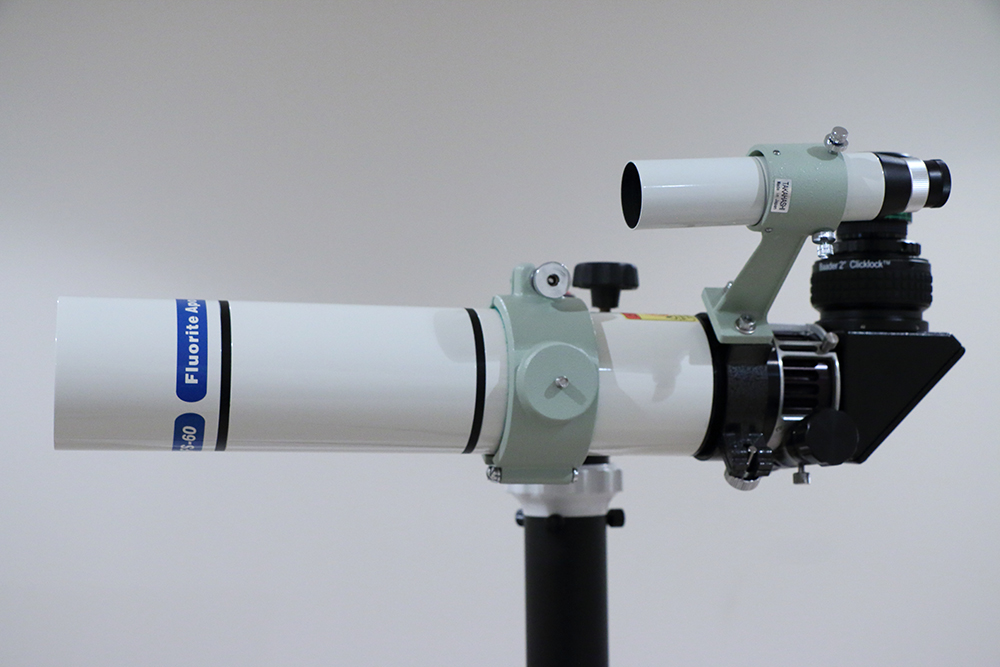
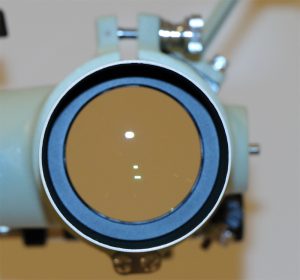
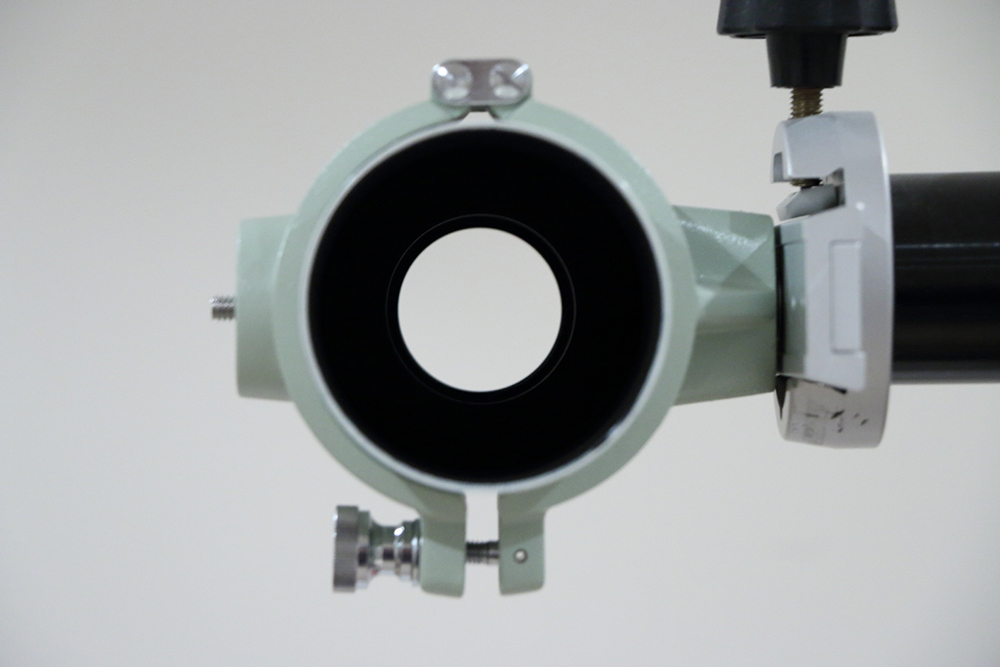
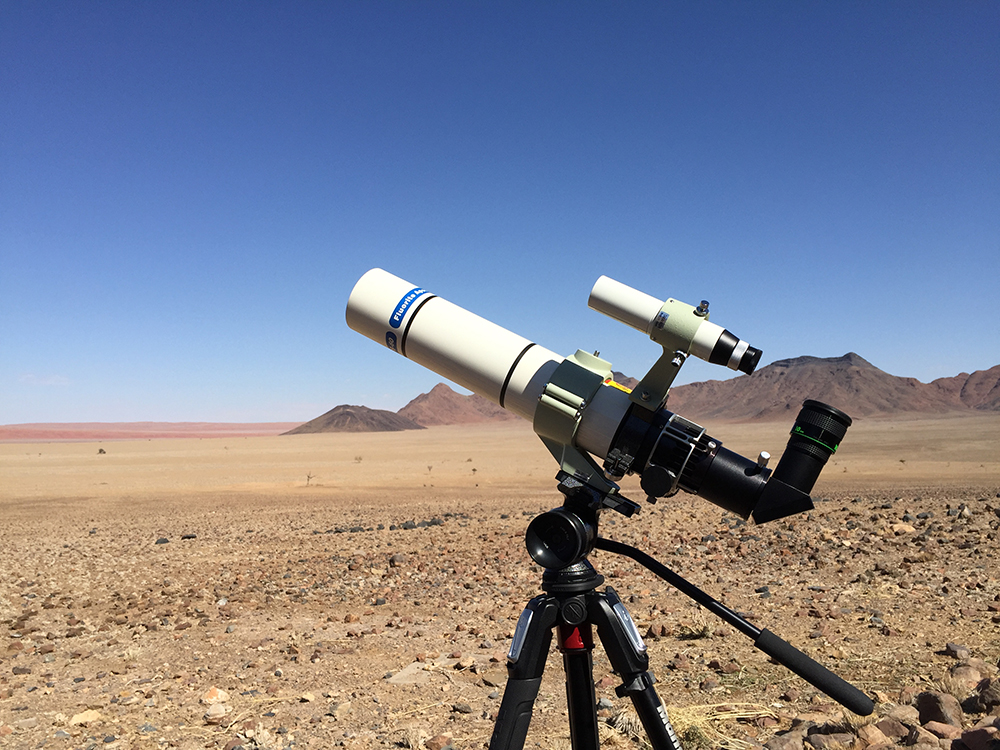

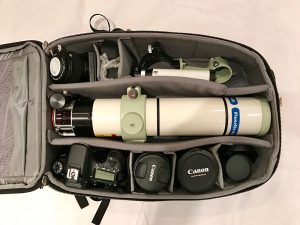
Pingback: Takahashi FC-76Q Review | Alpha Lyrae